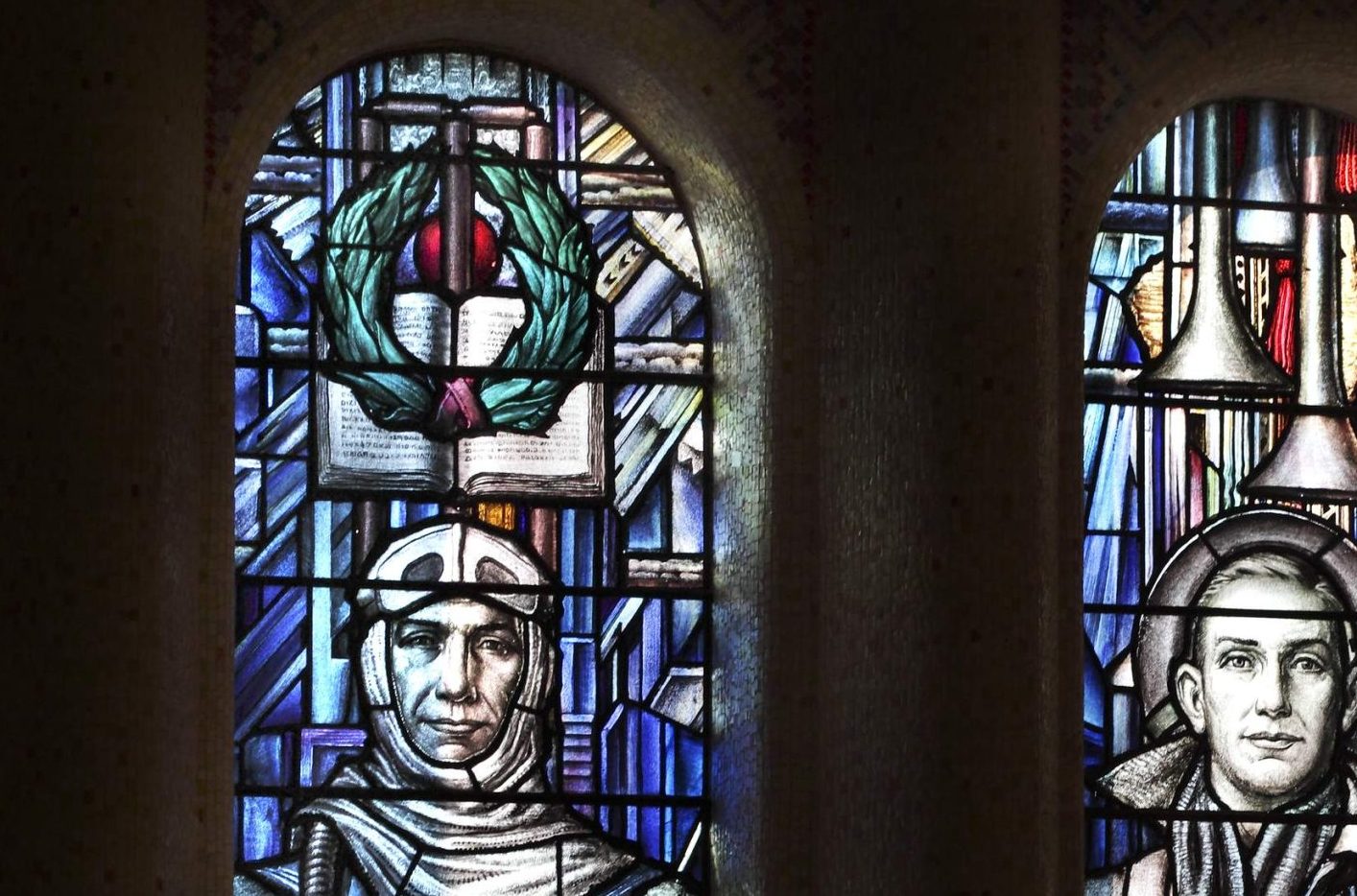
WHEN the 2022 Napier Waller Art Prize winner is announced at Parliament House on June 23, many may wonder who Napier Waller was, but with the publication of Jan William Smith’s new book, “The Glass Cricket Ball”, that question is well and truly answered.
Mervyn Napier Waller was the Australian artist who, in 1915, enlisted in the Australian Imperial Force. In 1937 he was chosen to create the mosaics and stained-glass windows in the Australian War Memorial’s Hall of Memory.
What may be less well known is that, after his right arm was amputated in France, Waller immediately learnt to write and draw with his left hand, saying: “I think a man could learn to paint with his feet if he had the determination to keep at it and the pleasure to express himself.”
The official report declared him to have “suffered total incapacity… permanently unfit for service”, but as Smith observes, he would go home to paint the biggest picture of his life.
Before leaving for World War I he had already married his classmate at the Victorian National Gallery’s art school, Christian Yandell, a theosophist and spiritualist who casts a shadowy figure in the book.

Waller returned to Australia to build a house with her in suburban Ivanhoe, where the couple became the centre of the “modern” visual arts community.
Author Smith, a former journalist with the ABC and interstate daily newspapers, first became interested in the story of Waller while he was a voluntary guide at the War Memorial.
Among the principals in Smith’s dramatis personae are Charles Bean the historian, William Leslie Bowles the sculptor, whose original artwork was thwarted by ministerial skulduggery and, above all, John Linton Treloar, the canny and money-wise, long-time director of the AWM.

“I have imagined a meeting with Treloar at Waller’s home,” Smith says, “authenticity is one thing, but since we can’t always get that, I’ve had to make it up, though I do know that Treloar visited him at Ivanhoe.”
Smith’s book provides visual proof of Waller’s talents in drawing and painting, but makes it apparent that on his return from the Western Front, he turned to different forms of artworks, saying that if he were asked to do mosaics he would do mosaics, if glass he would do glass.
Trained in the western tradition, he had a quintessential European sensibility where wall decoration had to complement architecture in glass, music, murals and frescoes, leading to an ongoing battle with Bean and Treloar not just over content but over materials, since Waller insisted on using glass and tesserae from Italy, even as war with Italy loomed.
Even Waller, whose eyes had been on World War I, when he realised another 40,000 men had been killed in World War II, was forced to change focus, but he never compromised on materials.
Waller was a perfectionist and also a pedant, stipulating to Bean that the thematic titles for the different windows should be between seven to 11 letters and no more. Bean rather enjoyed that.
It is the “Ancestry” (eight letters) part of the Western Wall that gives the title to this book, “The Glass Cricket Ball”.
For when Waller got thinking about the essence of an Australian fighting man, it seemed to him that the love of cricket summed up the Australian spirit, so above the naval gunner’s head he depicted a wreath enclosing a red cricket ball, flanked by three stumps and two bails.
Waller died in 1972 seeing his mosaics and stained glass completed; the vision was incomplete until 1993 when then prime minister Paul Keating presided over the burial of The Unknown Australian Soldier, thereby making a memorial into a tomb.
In one of his many references to the strong Canberra light, Smith writes: “The setting sun will always light the red glass cricket ball above the naval gunner’s window… I think that Napier Waller would not have appealed against the light.”
Jan William Smith, “The Glass Cricket Ball,” Big Sky Publishing.
The Napier Waller Art Prize exhibition, open to the public, Parliament House, June 18-November 20.
Who can be trusted?
In a world of spin and confusion, there’s never been a more important time to support independent journalism in Canberra.
If you trust our work online and want to enforce the power of independent voices, I invite you to make a small contribution.
Every dollar of support is invested back into our journalism to help keep citynews.com.au strong and free.
Thank you,
Ian Meikle, editor




Leave a Reply